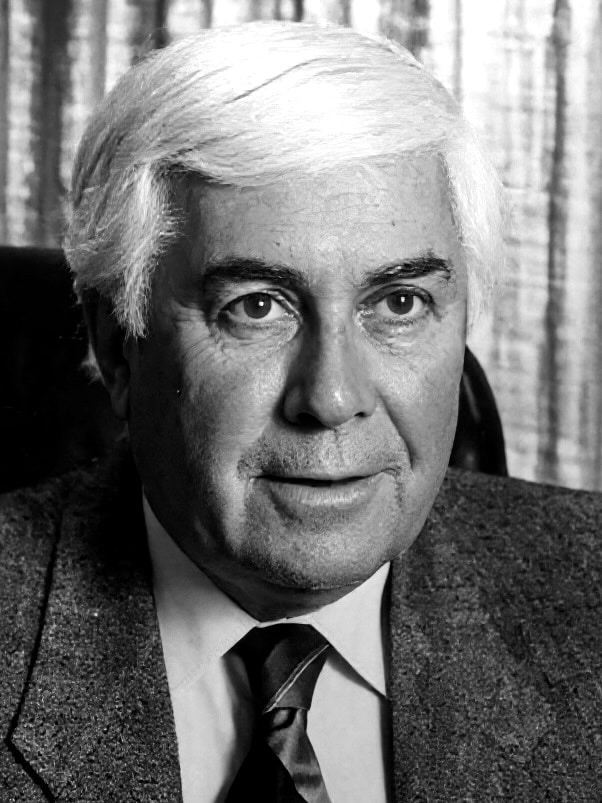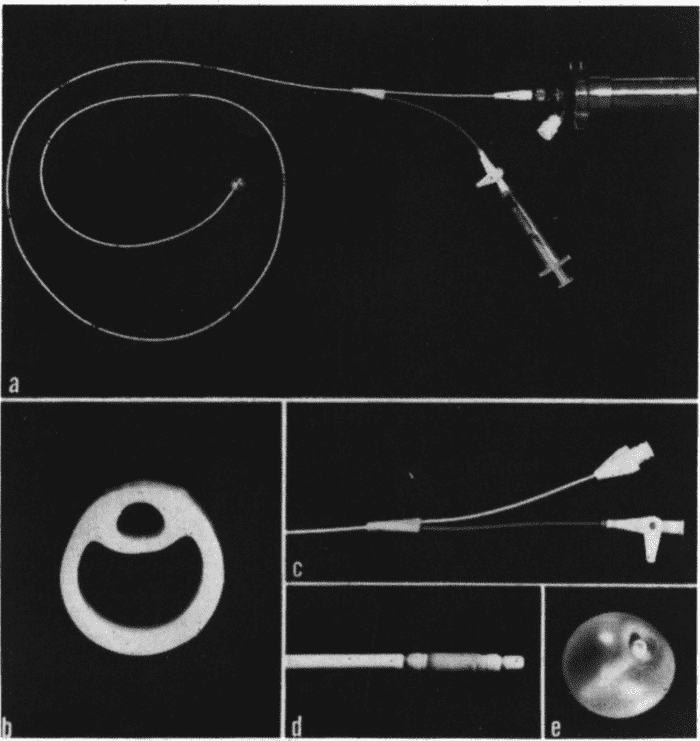Jeremy Swan

Harold James Charles ‘Jeremy’ Swan (1922-2005) was an Irish cardiologist
Swan was a pioneer in haemodynamic monitoring, best known as co-inventor of the Swan-Ganz catheter with William Ganz. Revered for his clinical acumen, innovative spirit, and charismatic leadership, Swan transformed critical care cardiology through his invention and his decades of mentorship.
Born in Sligo, Ireland, Swan survived a near-fatal bout of meningitis during university, treated at home by his mother with sulphonamides. Following medical training at the University of London, he joined the RAF in 1946, serving as a squadron leader and medical specialist in Iraq. His early research under Nobel laureate Sir Henry Dale laid the foundation for a distinguished scientific career.
Swan moved to the United States in 1951 at the invitation of Earl Wood, joining the Mayo Clinic where he rose to director of cardiac catheterisation. In 1965, he was appointed Chief of Cardiology at Cedars of Lebanon Hospital (later Cedars-Sinai), Los Angeles. Inspired by watching sailboats off Santa Monica Beach in 1967, he conceived a flow-directed catheter to safely reach the pulmonary artery without triggering arrhythmias. The result, developed with William Ganz and Edwards Laboratories, was the Swan-Ganz catheter, introduced in 1970.
Swan’s innovation facilitated real-time bedside assessment of cardiac output and pulmonary pressures, transforming intensive care and guiding rational therapy for shock and heart failure. He served as President of the American College of Cardiology in 1973 and was recognised with its highest honours.
A keen boxer, avid conversationalist, and passionate mentor, Swan was admired for his warmth and wit. Despite personal tragedies—including the death of his daughter Katherine in 1992 and a debilitating stroke in 2001—he remained intellectually active and beloved by generations of cardiologists. He died in Los Angeles in 2005.
Biography
- 1922 – Born December 1 in Sligo, Ireland.
- 1939 – Graduated St Vincent’s College, Dublin; survived meningitis.
- 1939–45 Bachelor of Medicine (M.B), University of London.
- 1945 – Intern and junior resident at St Thomas’s Hospital, London.
- 1946 – Commissioned in RAF; served in Iraq as squadron leader and medical specialist.
- 1948 – Research fellow with Sir Henry Hallett Dale (1875-1978) at St Thomas’s; PhD in vascular physiology.
- 1951 – Invited to Mayo Clinic by Earl Howard Wood (1912-2009); led cardiac catheterisation research.
- 1965 – Appointed Chief of Cardiology at Cedars of Lebanon (Cedars-Sinai Medical Centre) in Los Angeles.
- 1967 – Conceived the concept for flow-directed catheter after observing sailboats.
- 1970 – Published landmark paper on the Swan-Ganz catheter with William Ganz, Catheterization of the heart in man with use of a flow-directed balloon-tipped catheter
- 1973 – Elected President, American College of Cardiology.
- 1985 – Named Distinguished Fellow, American College of Cardiology.
- 1987 – Retired from Cedars-Sinai after 22 years as Chief of Cardiology.
- 1992 – Death of daughter Katherine from cervical cancer; published moving eulogy “Kath”
- 1999 – Received ACC Distinguished Service Award.
- 2001 – Named Master of the American College of Cardiology; suffered debilitating stroke.
- 2003 – Awarded ACC’s highest academic honour for scientific achievement.
- 2005 – Died February 7 in Los Angeles.
- Awards – Walter Dixon Memorial Award of the British Medical Association, Maimonides Award of the State of Israel, Herrick Award for outstanding achievement in Clinical Cardiology from the American Heart Association, Theodore Cummings Humanitarian Award from Cedars-Sinai Hospital
Medical Eponyms
Swan-Ganz catheter – pulmonary artery catheter (1970)
A balloon-tipped, flow-directed pulmonary artery catheter co-invented in 1970 by William Ganz and Jeremy Swan at Cedars-Sinai Medical Center. The catheter enabled safe bedside measurement of pulmonary artery pressures, pulmonary capillary wedge pressure, and cardiac output.
Originally inserted via antecubital or central venous access, the catheter “floats” through the right heart chambers into the pulmonary artery with the aid of the balloon. Provided critical insight into the haemodynamic profiles of circulatory shock, particularly in distinguishing cardiogenic vs non-cardiogenic pulmonary oedema.
Widely adopted in intensive care and cardiology, though its routine use has declined in favour of less invasive modalities.
Developed in collaboration with Edwards Laboratories.
Pictured below is the “extruded polyvinyl-chloride catheter 1.7mm in outer diameter” with the balloon tipped catheter and “attached to a strain-gauge catheter.” The pulmonary artery was accessed via “antecubital-vein cutdown” during the inception

Key Medical Contributions
- Swan-Ganz catheter – Co-invented the pulmonary artery catheter for bedside haemodynamic monitoring.
- Congenital heart disease – Pioneered catheter-based physiologic studies of congenital shunts and pulmonary hypertension.
- Mentorship and leadership – Developed premier cardiology training programs at Mayo Clinic and Cedars-Sinai.
- Preventive cardiology – Chaired ACC Preventive Cardiology Committee; founding editorial board member of Preventive Cardiology journal.
Major Publications
- Swan HJ, Zapata-Diaz J, Burchell HB, Wood EH. Pulmonary hypertension in congenital heart disease. The American Journal of Medicine. 1954 Jan 16(1); 12-22.
- Swan HJ, Ganz W, Forrester J, Marcus H, Diamond G, Chonette D. Catheterization of the heart in man with use of a flow-directed balloon-tipped catheter. N Engl J Med. 1970; 283(9): 447-451.
- Swan HJ. Kath. Ann Intern Med. 1992 Dec 15;117(12):1049-50.
- Ganz W, Tamura K, Marcus HS, Donoso R, Yoshida S, Swan HJ. Measurement of coronary sinus blood flow by continuous thermo-dilution in man. Circulation. 1971; 44; 181-95.
References
Biography
- Pearce, J. Jeremy Swan Is Dead at 82; Cardiologist and Innovator. The New York Times. 2005 Feb
- Forrester J, Kaul S, Shah P. Harold James Charles (“Jeremy”) Swan, MD, PhD. The American Journal of Cardiology. 2006 97(10); 1545-1546.
- Amsterdam EA. Harold J.C. (Jeremy) Swan, MD, PhD (1923–2005). Preventive Cardiology. 2007; 8(2): 75.
- Pham JTH. Harold James Charles (Jeremy) Swan: the man behind the “sailing catheter.” Hektoen International: Journal of Medical Humanities. 2016
Eponymous terms
- Palmieri T . The inventors of the Swan–Ganz catheter: H. J. C. Swan and William Ganz. Current Surgery. 2003, 60(3); 51-352.
- Billimoria AR. Pioneers in Cardiology: Jeremy Swan. Journal of the Association of Physicians of India. 2013; 61: 428
- Nickson C. History of the Pulmonary Artery Catheter. LITFL
Eponym
the person behind the name
MD, Bond University. Currently Intensive Cares Registrar at SJOG Midland. Pianist and avid Golfer | LinkedIn |
BA MA (Oxon) MBChB (Edin) FACEM FFSEM. Emergency physician, Sir Charles Gairdner Hospital. Passion for rugby; medical history; medical education; and asynchronous learning #FOAMed evangelist. Co-founder and CTO of Life in the Fast lane | On Call: Principles and Protocol 4e| Eponyms | Books |

I was a new RN graduate of 1975 and worked in one of the first coronary care units outside of Boston. Jeremy Swan introduced the swan in the mid 70’s at my unit and oriented us in their use. The transducer was filled manually with sterile water and twisted, then calibrated to mercury sphygmomanometer. I am mow an RN for 47 years and have done everything imaginable in critical care, heart transplant, lvads, These catheters charged CCU forever! Respectfully submitted, Wendy C. RN